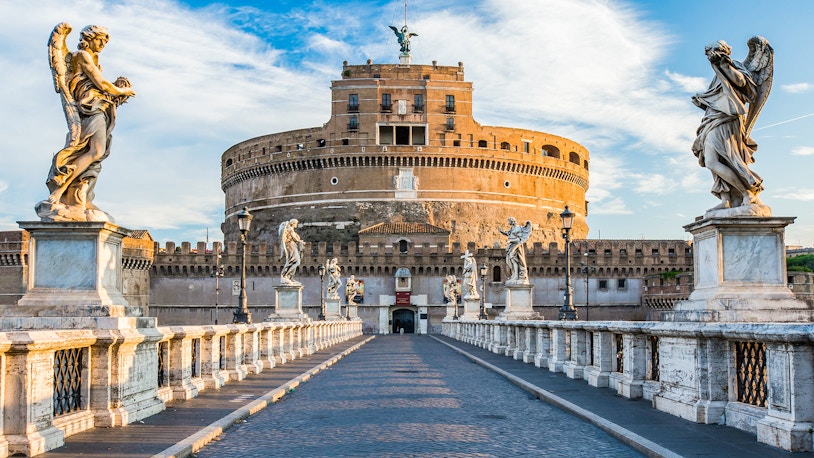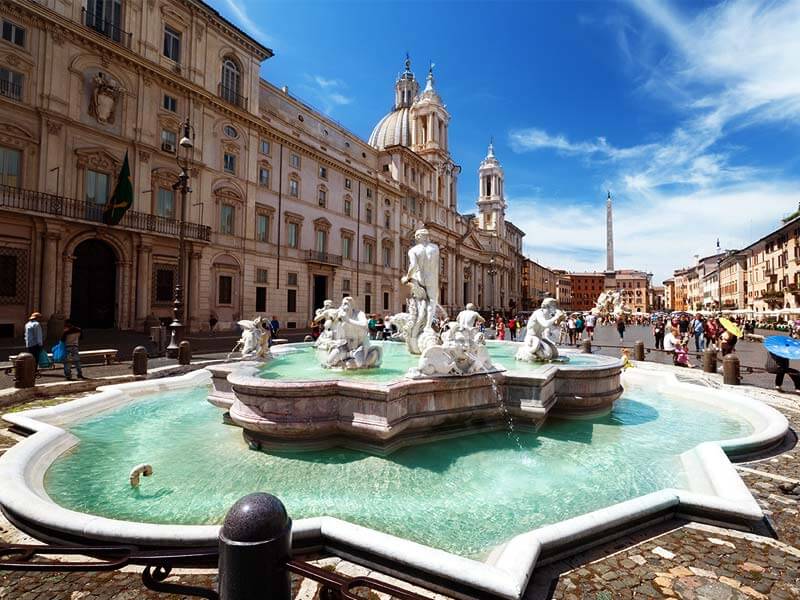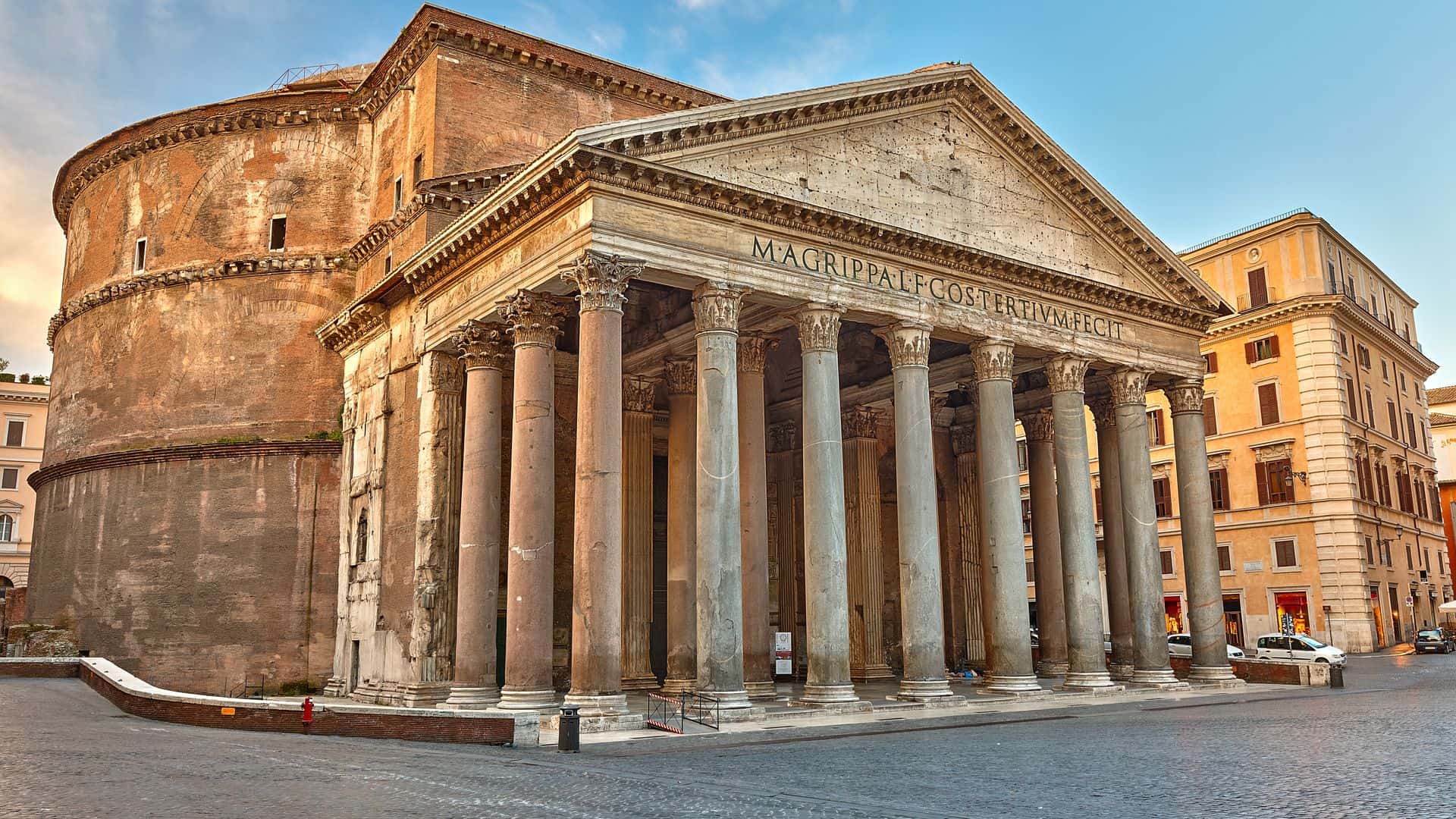
Diğer Gezi Planları
Route
Tag 107.09.2024Samstag

Spanish Steps
Located in the heart of Rome, this vibrant and elegant square is surrounded by 18th-century buildings augmented by the colorful flowers that adorn the Spanish Steps. The elegant steps by Francesco de Sanctis (1723-1726) consist of twelve flights of varying width, which descend to the scenic Franciscan Church of Trinita dei Monti. It is forbidden to eat or drink while sitting on these stairs. Pay attention to this so that a policeman does not warn you. The monumental stairway of 135 steps was built with French diplomat Étienne Gueffier's bequeathed funds of 20,000 scudi, in 1723–1725, linking the Trinità dei Monti church that was under the patronage of the Bourbon kings of France and the Bourbon Spanish Embassy at the top of the steps to the Holy See in the Palazzo Monaldeschi at the bottom of the steps. The stairway was designed by architects Francesco de Sanctis and Alessandro Specchi.
1 Setzt
Tag 208.09.2024Sonntag

Trevi Fountain
The most famous fountain in the world. One of the more obvious facts about the Trevi Fountain is the name. The word “Trevi” refers to the small piazza it sits in and the three roads that meet in that piazza. The number three in Italian is “tre” and road/street is “via”. Tre-via or Trevi. Fontana di Trevi or fountain of three roads. In Italian they call it “il lancio della monetina.” Basically you throw different numbers of coins in the fountain hoping for varied results. 1 coin grants you a safe return to Rome. 2 coins grant you a safe return to Rome and you’ll fall in love. 3 coins grant you a safe return to Rome, fall in love, and get married.
1 Setzt
Tag 309.09.2024Montag

Castel Sant’Angelo
"Uncover the secrets that lie within the walls of Castel Sant'Angelo! Start the tour to take a look at the works that describe the building's many transformations. Built first as a monumental tomb, then as a medieval fortress and a defensive point for barbarian invasions, the castle will offer you new perspectives on Roman history. Explore the museum's 5 floors leading up a spiral ramp, then see the cells and rooms that served as the Papal residence, as well as an ash chamber where you can admire the remains of iconic Roman characters and perfectly preserved frescoes. End the tour on the Castle's roof terrace and have a picturesque view of the entire city.

Piazza Navona
With its showy fountains, baroque palazzi and colorful cast of street artists, hawkers and tourists, Piazza Navona is central Rome’s elegant showcase square. Built over the 1st-century Stadio di Domiziano, it was paved over in the 15th century and for almost 300 years hosted the city's main market. This place has always been a very crowded spot. You will have a peaceful moment in the crowd while watching the fountain in the middle. To catch the piazza at its most alluring, come first thing in the morning before the crowds arrive or after dark when the fountains are illuminated. Fill up with water at the nasone ("big nose") drinking fountain in the north of the piazza.

Pantheon
The Pantheon of Agrippa, also known as the Roman Pantheon, is one of the architectural masterpieces of the Italian capital. It is the best preserved building from ancient Rome. Visiting this place is completely free, but many tourists visit this area with a guide. The construction of the current Pantheon was carried out during the reign of Hadrian, in the year 126 A.D. The name of Agrippa comes from the place in which the current building is built, which was previously occupied by the Pantheon of Agrippa, built in the year 27 B.C and that was destroyed in a fire in the year 80 A.D. At the beginning of the 7th century the building was donated to the Pope Boniface IV, who transformed it into a church, in which function it currently finds itself in a perfect state of preservation.

Pantheon
The Pantheon of Agrippa, also known as the Roman Pantheon, is one of the architectural masterpieces of the Italian capital. It is the best preserved building from ancient Rome. Visiting this place is completely free, but many tourists visit this area with a guide. The construction of the current Pantheon was carried out during the reign of Hadrian, in the year 126 A.D. The name of Agrippa comes from the place in which the current building is built, which was previously occupied by the Pantheon of Agrippa, built in the year 27 B.C and that was destroyed in a fire in the year 80 A.D. At the beginning of the 7th century the building was donated to the Pope Boniface IV, who transformed it into a church, in which function it currently finds itself in a perfect state of preservation.

Pantheon
The Pantheon of Agrippa, also known as the Roman Pantheon, is one of the architectural masterpieces of the Italian capital. It is the best preserved building from ancient Rome. Visiting this place is completely free, but many tourists visit this area with a guide. The construction of the current Pantheon was carried out during the reign of Hadrian, in the year 126 A.D. The name of Agrippa comes from the place in which the current building is built, which was previously occupied by the Pantheon of Agrippa, built in the year 27 B.C and that was destroyed in a fire in the year 80 A.D. At the beginning of the 7th century the building was donated to the Pope Boniface IV, who transformed it into a church, in which function it currently finds itself in a perfect state of preservation.

Pantheon
The Pantheon of Agrippa, also known as the Roman Pantheon, is one of the architectural masterpieces of the Italian capital. It is the best preserved building from ancient Rome. Visiting this place is completely free, but many tourists visit this area with a guide. The construction of the current Pantheon was carried out during the reign of Hadrian, in the year 126 A.D. The name of Agrippa comes from the place in which the current building is built, which was previously occupied by the Pantheon of Agrippa, built in the year 27 B.C and that was destroyed in a fire in the year 80 A.D. At the beginning of the 7th century the building was donated to the Pope Boniface IV, who transformed it into a church, in which function it currently finds itself in a perfect state of preservation.
6 Setzt
Tag 410.09.2024Dienstag

Colosseum
The Colosseum is the main symbol of Rome. It is an imposing construction that, with almost 2,000 years of history, will bring you back in time to discover the way of life in the Roman Empire. The best way to skip the lines upon entering and to get to know the famous monument in detail, is to take a guided tour. This one, visits the Colosseum, Roman Forum, and Palatine Hill, skipping the lines and with an expert local guide. At present the Colosseum is, along with the Vatican City, Rome's greatest tourist attraction. Each year 6 million tourists visit it. On 7 July 2007 the Colosseum became one of the Seven Wonders of the Modern World. The best way to skip the lines upon entering and to get to know the famous monument in detail, is to take a guided tour. This one, visits the Colosseum, Roman Forum, and Palatine Hill, skipping the lines and with an expert local guide. There are some theories that the Colosseum was filled with water for naval battle recreations, although for the moment there have not been conclusive investigations.

Santa Maria Maggiore Basilica
A basilica that became the subject of the Pope's dream, Santa maria Maggiore! According to the rumor, the Pope of the time sees the Virgin Mary in his dream. The Virgin Mary tells him about this construction and its location. A basilica was built on it. In its construction, flashy metals such as gold were used. The pyramid-shaped bell tower at the top of the building is the tallest bell tower in Rome. The nave and nave mosaics of the church are originals of the 5th century. Its ceiling was covered with gilding brought from the New World, which was later given to the Pope by the Queen of Spain, Isabella.
2 Setzt
